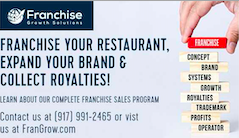Image created with canva
Restaurants must leverage operational strategies to thrive. As the industry evolves, those who invest in their operations will reap the benefits, ensuring long-term success. By focusing on operational elements, restaurant owners can ensure a successful and sustainable business model that meets the demands of today’s consumers
THE IMPORTANCE OF STRONG RESTAURANT OPERATIONS AND ITS IMPACT ON SUCCESS
By Fred Kirvan- Founder & CEO Kirvan Consulting
In the restaurant industry, the strength of operations can significantly influence a business’s overall success. From monitoring inventory to ensuring exceptional customer service, robust operational strategies form the backbone of any successful restaurant. This article covers the importance of solid restaurant operations and how they impact success across various levels, supported by statistics from reputable sources like Technomic and Nation’s Restaurant News.
- Operational Efficiency
Operational efficiency refers to a restaurant’s ability to deliver services and products while minimizing costs. Efficient operations lead to cost savings, higher profit margins, and improved customer satisfaction. According to a report by Technomic, restaurants that implement streamlined operations see a 15% reduction in operational costs. This reduction allows for better allocation of resources, including labor and inventory, ultimately enhancing profitability.
Key Operational Metrics
- Food Cost Percentage: Monitoring food cost percentage is crucial for maintaining profitability. The National Restaurant Association recommends keeping this percentage between 28% and 35% of total sales.
- Labor Cost Percentage: Effective labor management can significantly impact the bottom line. The ideal labor cost percentage should range from 20% to 30% of total sales.
- Customer Experience
Strong operations directly influence the customer experience. A well-trained staff, efficient service processes, and high-quality food all contribute to customer satisfaction. According to a Nation’s Restaurant News survey, 86% of diners are willing to pay more for a better experience. This statistic highlights the importance of investing in operational training and quality control.
Enhancing Customer Experience
- Training Programs: Regular staff training programs can improve service quality, reduce order errors, and enhance customer interactions.
- Feedback Mechanisms: Implementing feedback systems allows restaurants to gather insights directly from customers, enabling them to make necessary adjustments to improve service.
- Consistency in Quality
Consistency is key to building a loyal customer base. Strong operations ensure that every dish served meets the restaurant’s standards, regardless of who is preparing it. According to Technomic, 70% of consumers believe that food quality and flavor are essential when choosing a restaurant. Therefore, having standardized recipes and operational processes is critical for maintaining quality and consistency.
Quality Control Measures
- Standard Operating Procedures (SOPs): Creating SOPs for food preparation and service helps maintain consistency across all levels of operation.
- Regular Audits: Conducting regularly scheduled audits and assessments will help identify improvement areas and ensure that quality standards are consistently met.
- Financial Performance
The relationship between strong operations and financial performance cannot be overstated. Restaurants with efficient operational systems often report higher sales growth. According to a Nation’s Restaurant News study, restaurants that prioritize operational excellence experience a 7% higher annual sales growth than those that do not. This financial advantage underscores the need for restaurants to focus on optimizing their operations.
Key Financial Metrics
- Sales Per Labor Hour: This metric indicates how efficiently a restaurant uses labor resources. Higher sales per labor hour indicate better operational efficiency.
- Average Check Size: Increasing the restaurant guest average check size through upselling and better menu design can significantly boost revenue without increasing customer traffic.
- Employee Satisfaction and Retention
Strong operations benefit customers and positively impact employee satisfaction and retention. A well-organized environment with clear processes allows employees to perform their tasks effectively, reducing frustration. According to a study by the National Restaurant Association, restaurants with high employee satisfaction rates have a 25% lower turnover rate. This statistic underscores the importance of developing a supportive operational structure.
Enhancing Employee Satisfaction
- Empowerment and Involvement: Involving employees in decision-making and encouraging feedback can enhance job satisfaction.
- Career Development: Offering opportunities for career path advancement through training, financial incentives, and development can motivate employees to stay with the company.
Final Thoughts
Strong restaurant operations cannot be underestimated. They are vital to enhancing operational efficiency, customer experience, consistency in quality, financial performance, and employee satisfaction. By prioritizing operational excellence, restaurant owners can significantly impact their establishment’s success on all levels. Restaurants must leverage operational strategies to thrive. As the industry evolves, those who invest in their operations will reap the benefits, ensuring long-term success.
By focusing on these operational elements, restaurant owners can ensure a successful and sustainable business model that meets the demands of today’s consumers. This article incorporates verified statistics and provides actionable insights for restaurant success.
References
- Technomic. (n.d.). Restaurant Industry Data & Insights. Retrieved from Technomic
- Nation’s Restaurant News. (n.d.). Restaurant Industry Research and Trends. Retrieved from Nation’s Restaurant News
Gary Occhiogrosso holds the worldwide copyright.





